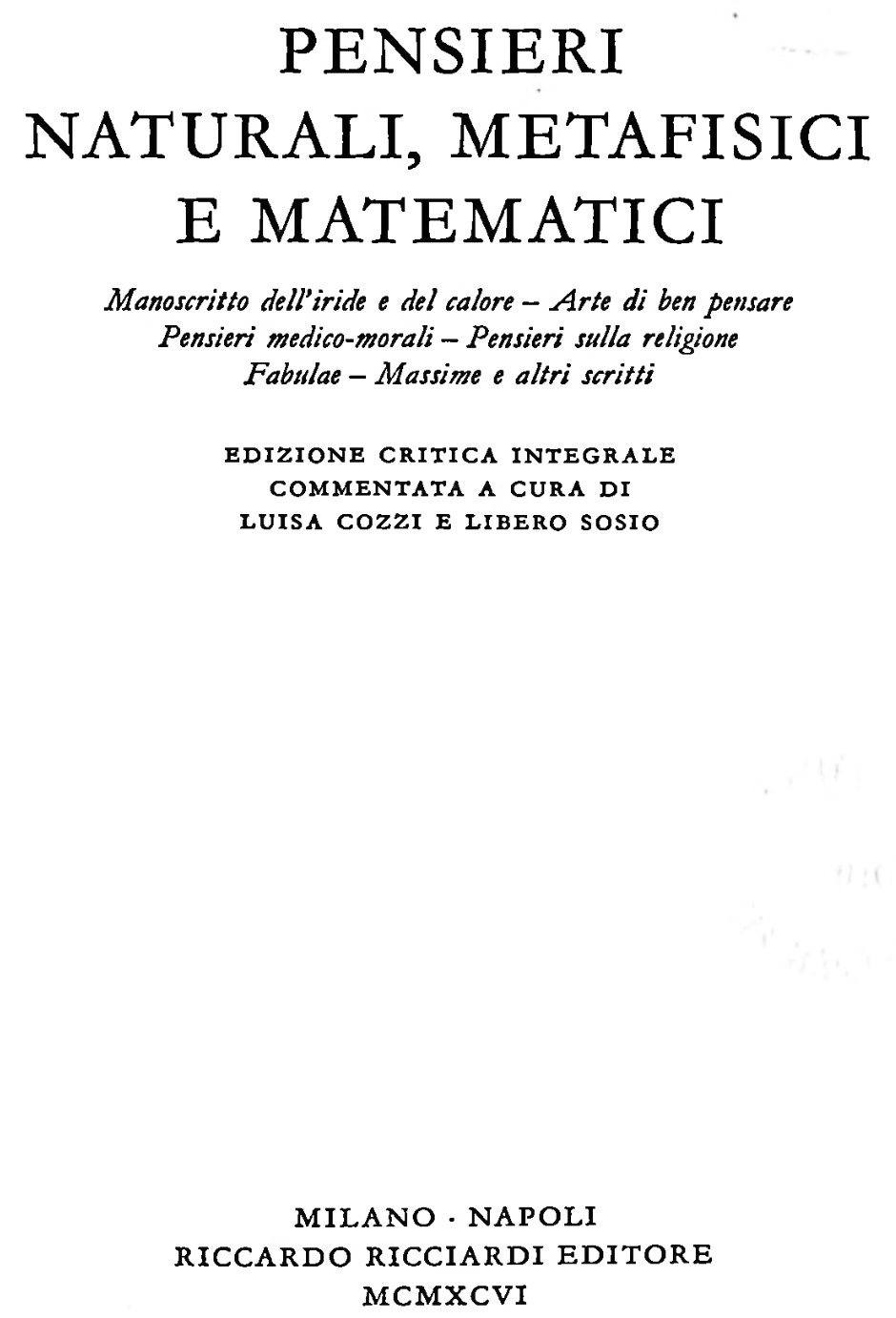When we think of the Scientific Revolution, the name of Galileo Galilei will almost certainly come up. In the next few posts, I will be examining the writings of Galileo, but also those of his mentor, Paolo Sarpi, the most important Venetian statesman of the late sixteenth and early seventeenth centuries, as well as those of Thomas Hobbes, who played a key rôle in the dissemination of Galileo’s ideas.
The contributions of these three ultimately led to the creation of mechanical philosophy—a term coined by the chemist Robert Boyle—which replaced the scholastic Aristotelian tradition that had been prevalent over the previous centuries. The key point of this new mechanical philosophy was to view all of Nature, including all living beings, humans as well, and all of their parts, through a mechanical lens.
Paolo Sarpi wrote extensively, in note form, on natural philosophy, but the 1769 fire destroying the library of Santa Maria dei Servi in Venice engulfed in flames most of his writings. What remains are his Pensieri, which were only published in the twentieth century:
Romano Amero published a selection of these in 1951 under the title Scritti Filosofici e teologici (Bari: Gius, Laterza & Figli).
Luisa Cozzi and Liberio Sosio published a complete annotated edition in 1996, entitled Pensieri naturali, metafisici e matematici e altri scritti (Milano-Napoli: Ricciardi).
Key to this new mechanical philosophy is that everything ultimately comes down to local motion. This is summarized by Sarpi in his Pensiero 116:
Niuna generazione o corruzione si può far senza moto locale, sendo elleno accostarsi parte a parte o parte da parte dividersi. Perciò non potrà esser incorruttibile se non quello che è immobile, e il morir dell’animale non sarà altro che una parte di lui muoversi e separarsi. Verissimo è dunque che il moto locale è il primo di tutti, e la prima virtù è la motiva locale, questa chiamandosi da Aristotele natura, quando in definire disse: est principium motus et quictis.
My translation is as follows:
No creation or corruption can be produced without local motion, whether this be coming together part by part, or splitting asunder part from part. Therefore nothing can be incorruptible unless it is immobile, and the death of an animal is nothing more than a part of it moving or separating itself. Truly therefore local motion is the first of all, and the first force is the local motive, which is called nature by Aristotle, which he defines as follows: It is the principle of motion and stillness.
So, for Sarpi, everything happening in the Universe, including creation and death, comes down to local motion. This idea will also be reflected in Thomas Hobbes’s writings:
Every action is local motion in the agent, as every passion is local motion in the patient.
In fact, Marin Mersenne, who ran in the mid-seventeenth century a scientific circle in Paris including Hobbes, Descartes and others, stated that Hobbes is among the philosophers who “explained everything through local motion”.
In the next post, we will see how this idea of local motion was used by Galileo.
If you wish to donate to support my work, please use the Buy Me a Coffee app.




